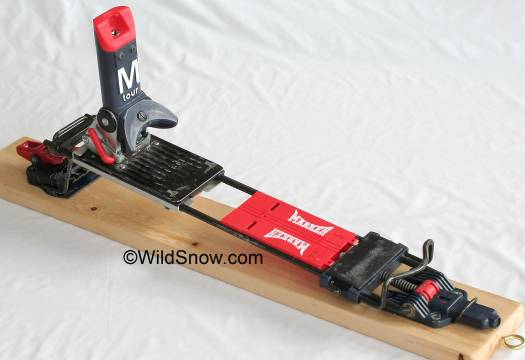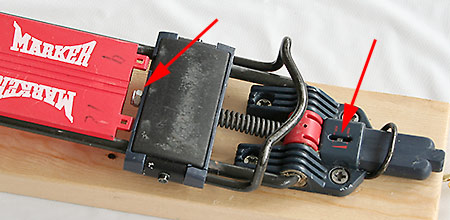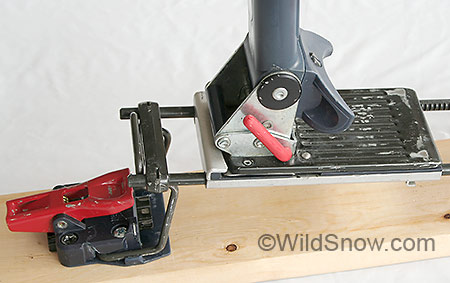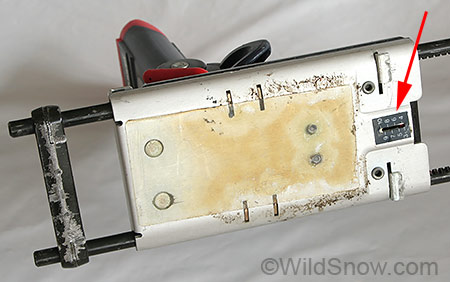Marker M-Tour is possibly the most fully featured AT ski touring binding ever made. In stores circa 1982 – 1985, the binding included adjustable fore/aft boot position, an adjustable plate return spring, an emergency release lever on the heel and more. While heavy, the binding is quite functional and was put to good use during its era.

Complete Marker M Tour backcountry skiing binding shown above. Binding is in tour mode with heel lift up. Click here for massive enlargement.

The M-Tour binding has two unusual adjustments. Arrow to left points to a nut you rotate to move the toe bail forward and backward, thus allowing exact placement of your boot for/aft position on the ski. I know of no other binding that has this feature. Very nice if you’re sharing the binding among different people, or want to experiment with boot positions.
M-Tour ski touring binding has the usual return spring that pulls the plate down to the ski in touring mode, only this return spring has adjustable tension. In photo above, arrow to right points to the return spring tension indicator, adjustment of this is done by rotating a set screw hidden in the far right end of the binding. While this feature is unnecessary in the light of modern backcountry skiing, it is somewhat fascinating it was included. Kind of a “because we can” little thing from Marker’s genius engineers.

Heel detail in touring mode, with heel lift in raised position.
You switch to downhill ski mode by dropping the end of the plate down in front of the large red lever, which you press on to move a small steel tongue that fits in a slot in the crosspiece at the end of the plate. Video makes this clear. The obvious red lever on the boot heel clamp releases the boot with light finger pressure, presumably for use if you’re hanging by one ski in a crevasse or something like that.
Upward (vertical) release is provided by the alpine-like heel clamp as shown in the photos. Side release is less obvious, provided by the whole heel assembly sliding to the side. What’s interesting is when the assembly moves to the side it releases the boot heel clamp using the same mechanism the red lever is attached to, thus causing a quick and complete release of boot from binding.

Underside of heel unit, arrow indicates scale for lateral release setting. For boot length adjustment this assembly slides on the binding rails when you move the tabs visible above and below the scale.
https://youtu.be/UBEXOht-4zk
Weight (one binding with screws): 46.1 oz, 1306 gr
Thanks goes to Njord for donating these ski bindings to the museum.

Marker M-Tour thumbnail.
